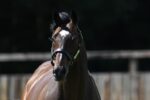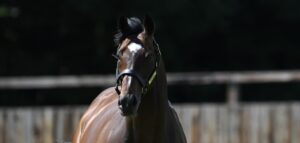One of my small pleasures during European racing’s largely fallow period at the start of each year is to watch the Road to the Kentucky Derby’s ever-changing points table. On most weekends until the middle of April, the candidates can fight for ranking points to become one of the select 20 horses allowed to contest the Run For The Roses on the first Saturday in May.
Fascinating though this process is (and wouldn’t it be nice to see more than 20 battle-hardened colts fighting for a place at Epsom), one could be forgiven for wondering what significance the Kentucky Derby has for European racing. Ok, it was once won by Northern Dancer, who was to shape the breed in Europe, but that was nearly 60 years ago. Since then the majority of Kentucky Derby winners have failed to make much impact on the European industry, rather like the 1957 winner Iron Liege, who proved a flop when part of Marcel Boussac’s failing empire from 1959 to 1967.
There were a few exceptions, of course. The 1989 winner Sunday Silence, by way of Japan, sired several sons who were responsible for European Group 1 winners, with Deep Impact leading the way with such as Saxon Warrior, Auguste Rodin, Study Of Man, Snowfall and Fancy Blue.
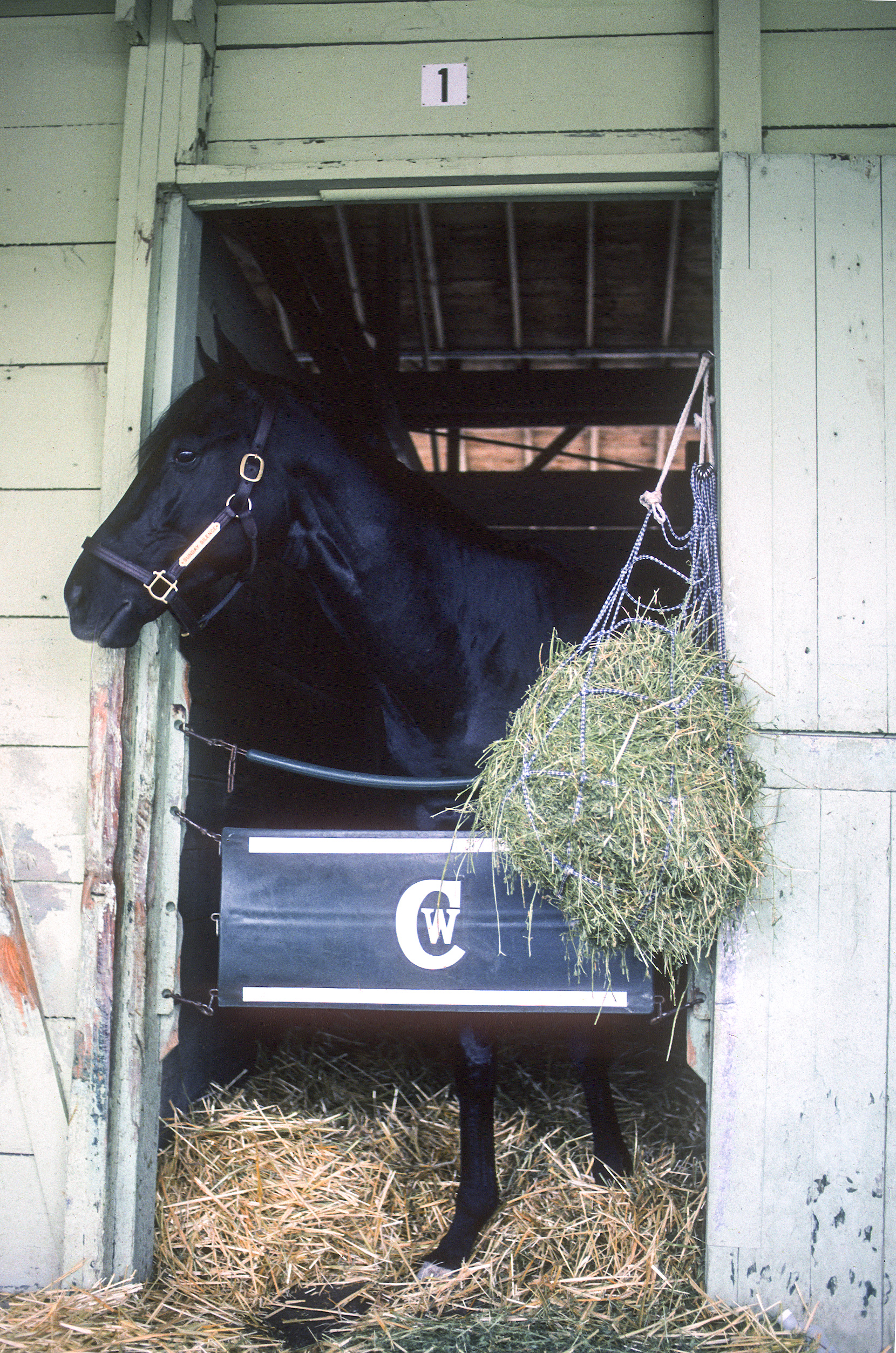
Sunday Silence pictured the morning after his Breeders’ Cup Classic win. He would go on to change the face of Japanese breeding. Photo – George Selwyn
Pleasant Colony, the hero of 1981, also had his moments, thanks largely to the Irish Derby and King George winner St Jovite, while Seattle Slew, the 1977 Triple Crown winner, was responsible for the European Group 1 winners Seattle Song, Septieme Ciel and Magic Of Life. Others with a European Group 1 winner to their credit included the 1975 winner Foolish Pleasure, whose daughter Baiser Vole won the Poule d’Essai des Pouliches, and 1987 winner Alysheba, whose daughter Moonlight Dance took the Prix Saint- Alary. None of them, though, was to enjoy lasting European success in the manner of Northern Dancer.
Two Triple Crown winners, Secretariat and Affirmed, scrape into the last 50 winners of the Kentucky Derby, thanks to their remarkable exploits in 1973 and 1978. Secretariat’s direct impact on European racing was limited to a handful of Group winners, such as Dactylographer (William Hill Futurity), Athyka (twice a winner of the Prix de l’Opera) and Bluebook (a triple Group 3 winner). Affirmed, for his part, became a successful sire of European turf performers, hitting the Group 1 target with Bint Pasha (Prix Vermeille and Yorkshire Oaks), Zoman (Prix d’Ispahan), Trusted Partner (Irish 1,000 Guineas), Tibullo (Gran Criterium) and Regal State (Prix Morny).
Affirmed, for his part, became a successful sire of European turf performers
But if we turn the spotlight onto the 25 Kentucky Derby winners from 1990 to 2014, their impact on Europe has been pretty negligible. I should point out that two of the 25 – Funny Cide and Mine That Bird – were geldings, Barbaro died before he could take up stud duties and War Emblem sired only 120 foals.
All American
However, that still leaves the likes of Strike The Gold, Lil E. Tee, Sea Hero, Go For Gin, Grindstone, Silver Charm, Real Quiet, Charismatic, Monarchos, Smarty Jones, Giacomo, Big Brown, Super Saver (now in Turkey), Animal Kingdom (now in Japan), I’ll Have Another, Orb (now in Uruguay) and California Chrome (now in Japan). Of the others, Unbridled was to establish a male line which has exerted a powerful influence on the Triple Crown events but its success hasn’t extended to Europe.
Coolmore stood a couple of the more notable Kentucky Derby winners of these 25 years at its Kentucky arm, Ashford Stud. Fusaichi Pegasus, the winner in 2000, entered the record books with a valuation of $70 million at the start of his stud career, but his stud fee went from an initial $150,000 to $7,500. Then there was Thunder Gulch, who also carried Michael Tabor’s colours to victory in the Florida Derby, Belmont Stakes and Travers Stakes. Thunder Gulch had his moments as a stallion, notably being responsible for Horse of the Year Point Given and record-earning mare Spain, but the fact that his first two dams were distinguished European racemares didn’t translate into European success at stud.
In the circumstances, one could have been forgiven for thinking that the Coolmore team would have been wary of further winners of the Kentucky Derby when looking for much-needed outcrosses for all their Sadler’s Wells line mares. But how could they resist the many attractions of American Pharoah, who in 2015 became the first Triple Crown winner since Affirmed in 1978? In addition to his Classic treble, the son of Pioneerof The Nile also numbered the Breeders’ Cup Classic and a pair of juvenile races among his eight Grade 1 successes.
Then, three years later, history was to repeat itself when Justify landed the Triple Crown before being retired to Ashford. There was speculation that Justify’s breeding rights had been bought for $60 million before the second leg of the Triple Crown, with a contingency that the price would rise to $75 million if he were to win the Preakness and Belmont Stakes.
There was speculation that Justify’s breeding rights had been bought for $60 million before the second leg of the Triple Crown, with a contingency that the price would rise to $75 million if he were to win the Preakness and Belmont Stakes
In acquiring the services of two outstanding dirt performers, the Coolmore team cited the fact that European racing and breeding had been revolutionised during the 1970s and ’80s by American stallions who owed their reputations largely to their exploits on dirt.
For example, Mill Reef and Riverman were by Never Bend, who had finished second in the Kentucky Derby. The excellent Sir Ivor was by Sir Gaylord, who had the misfortune to break down the day before the Kentucky Derby, which he had been expected to win. Sir Gaylord – a half-brother to Secretariat – was also responsible for Habitat, a top miler who became highly effective stallion in Ireland. The dual Arc winner Alleged was by Hoist The Flag, a champion juvenile who was first past the post in all six of his career starts prior to fracturing a leg. Another champion juvenile, Hail To Reason, gave us the Derby winner Roberto.
Then there was the unprecedented string of top European performers sired by Northern Dancer, such as Nijinsky, Sadler’s Wells, El Gran Senor, Lyphard, The Minstrel, Try My Best, Secreto, Be My Guest, Northern Taste, Northern Baby, Nureyev, Storm Bird, Lomond, Shareef Dancer, Northern Trick, Ajdal and Unfuwain. Northern Dancer’s American-based son Danzig, who raced only on dirt, later mirrored his sire’s success in Europe. Northern Dancer, of course, had had his chance to become a Triple Crown winner in 1964, only to run out of stamina when odds-on for the Belmont Stakes.
One common denominator owned by the dirt horses who made such an impact on European breeding was that they had top European turf horses close up in their pedigrees. Among the six stallions in the first three generations of Northern Dancer’s pedigree were Nearco, Hyperion and Mahmoud; Sir Gaylord and Hail To Reason were both sons of the Irish-bred Turn-To, while Sir Gaylord’s broodmare sire Princequillo was conceived in France; Never Bend’s pedigree was largely European, combining bloodlines developed by the Aga Khan and Marcel Boussac; and Hoist The Flag was a grandson of the great Ribot and his second dam was the French-bred Triomphe.
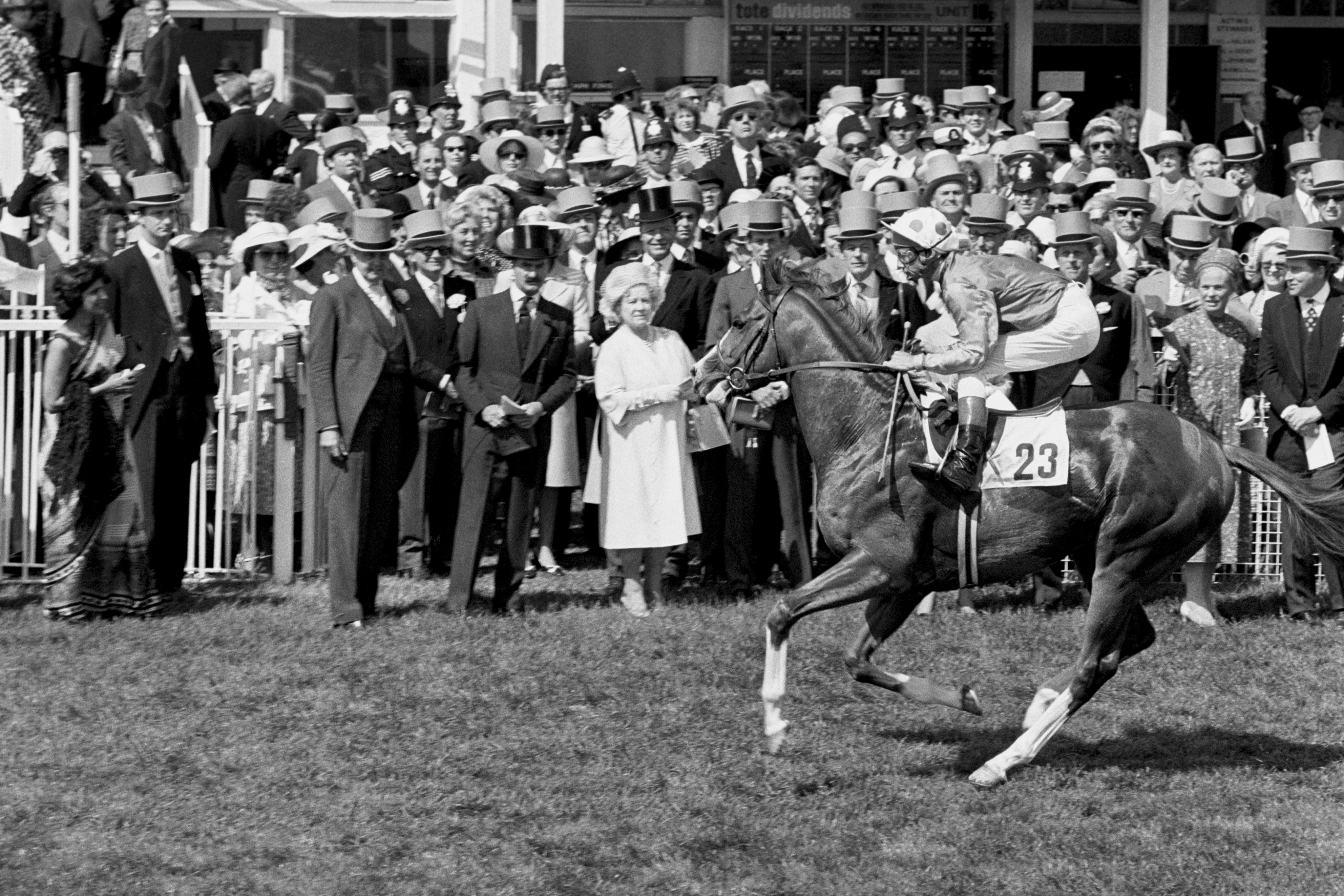
The Minstrel: dual Derby winner and one of the very best sons of Northern Dancer
Imported bloodlines
The list of North America’s leading stallions is another reminder of the extent to which American breeders were reliant of imported bloodlines. In the 33 years between 1930 and 1962, imported stallions topped the table no fewer than 21 times, with Nasrullah, Princequillo, Mahmoud, Bull Dog, Blenheim, Sir Gallahad and Sickle among them.
American Pharoah, though, has a largely American pedigree, the only foreign interloper in his first four generations being the Argentine-bred Lord At War, the broodmare sire of American Pharoah’s sire Pioneerof the Nile.
This hasn’t stopped him shining with Sadler’s Wells line mares – it was Sadler’s Wells’s daughter Imagine who provided him with his first Group 1 winner, the Criterium International scorer Van Gogh. American Pharoah has also made an excellent start with daughters of Galileo. Twelve of this partnership’s first 14 starters are winners and among them are Above The Curve (Prix Saint-Alary), Pista (Park Hill Stakes) and the Group/Graded placed performers Monarch Of Egypt, Hudson Ridge and Thinking Of You. With the American-raced Scarabea also picking up black-type, that’s six black- type performers from 14 runners. We are likely to learn more about this cross in the next few years, as there are now 34 foals of racing age bred this way.
Above The Curve was one of an impressive total of four Group or Grade 1 winners for American Pharoah in 2022, the others being the American sprinter American Theorem, top American mare As Time Goes By and the very successful Japanese colt Café Pharoah.
Above The Curve is the odd one out in that the other three all won on dirt, but American Pharoah has already sired enough good turf horses, including Harvey’s Lil Goil, Four Wheel Drive and Sweet Melania in the US, to suggest his progeny have a future in Europe. He also has a Group 2 winner and two Group 3 winners in Australia. He shuttled for five consecutive years, but his last three visits saw him cover 144 mares, then 101 and finally 26 mares, so it is hardly surprising that he didn’t return in 2022.
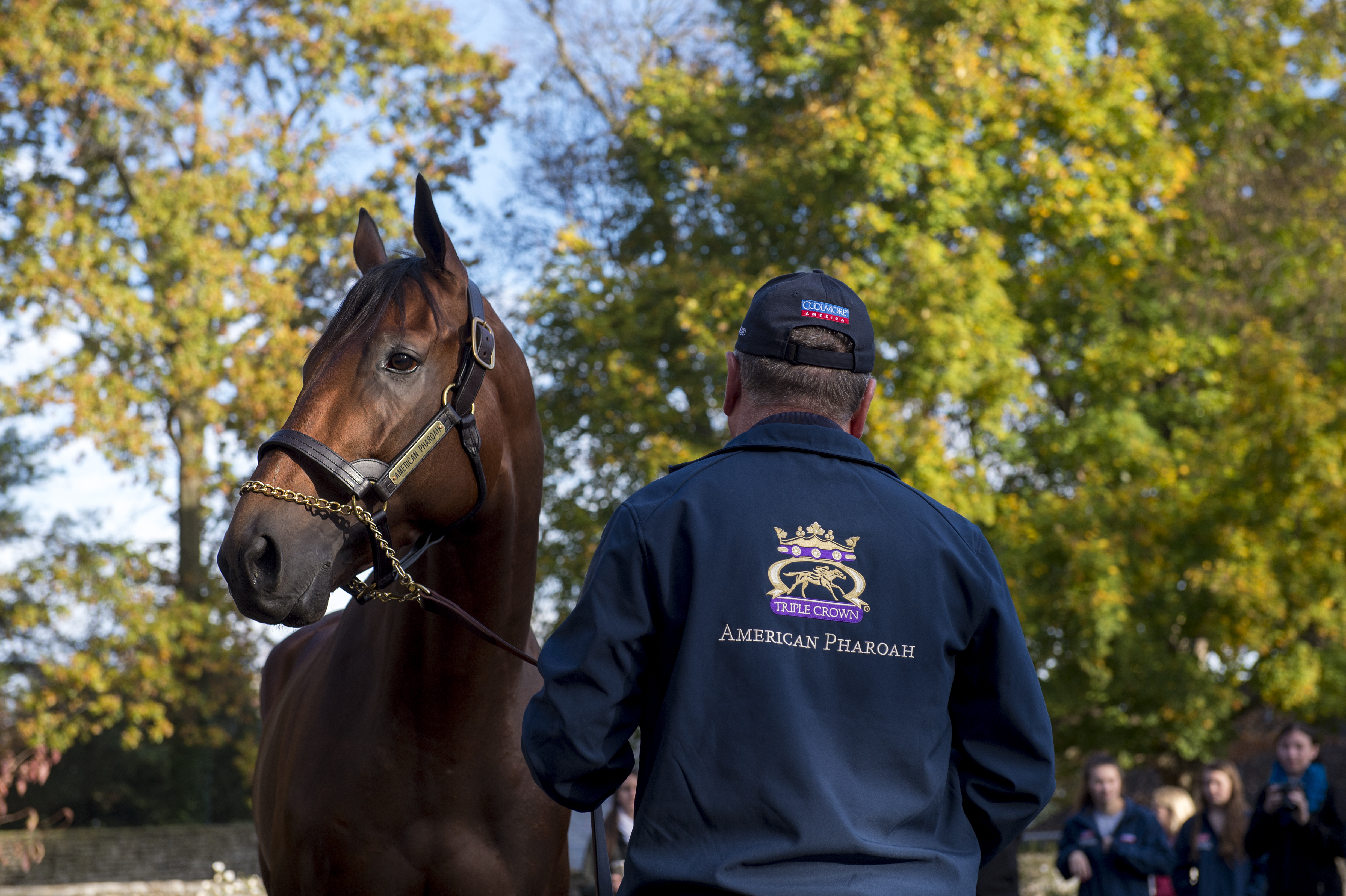
American Pharoah crossing well with Galileo mares – Photo: George Selwyn
The same applied to Justify after his book fell from 149 mares in 2019 and 142 mares in 2020 to 82 mares in 2021. Australian breeders must now be wishing he was still available to them, following the success of his daughter Learning To Fly.
With daughters of Fastnet Rock and Stravinsky as her first two dams, Learning To Fly possesses plenty of speed. After winning a trial over the odd distance of 792 metres in mid-January, she was again successful when she made her official debut in the Group 3 Widden Stakes over 1,100 metres. Back in action for the third time in less than a month, Learning To Fly finished strongly to land the Inglis Millennium, again over 1,100 metres. Although this race is only a restricted Listed race, it carried more than ten times the prize-money of her Group 3 win, and this success propelled Justify to the top of Australia’s first-crop sires’ table, well ahead of second-ranked Harry Angel.
Big impression
Australia is by no means the only country where Justify’s first runners have created a big impression. He has been represented by five winners from nine runners in Ireland, 22 winners from 59 starters in the US and four winners from 13 runners in Japan. There have also been winners in France and Saudi Arabia. His American black-type performers include the Grade 3 winners
Champions Dream and Just Cindy, Grade 2-placed Listed winner Justique, Grade 1-placed Verifying and the Grade 3-placed Prove Right and Alpha Bella.
Even so, his select group of Irish runners have arguably shown greater potential. Leader of the pack is Statuette, who won both her juvenile starts, including the Airlie Stud Stakes over six furlongs in June, even though she was described by trainer Aidan O’Brien as a very big filly (and she has every right to be big, as Justify and her broodmare sire Pivotal both nudged towards 17 hands).
“I’d say the Justifys are not two-year-olds at all and I was surprised they were doing what they were doing. All they want is a bit of time” – Aidan O’Brien
Another of Justify’s Irish daughters, Aspen Grove, sprang a 66/1 surprise in taking the Newtownanner Stud Stakes over a mile. Fourth in that race was Dame Kiri, another Justify filly who returned to action late in the season to run out a ten-length winner of a six-furlong maiden. After Dame Kiri’s win, Aidan O’Brien commented that: “I’d say the Justifys are not two-year-olds at all and I was surprised they were doing what they were doing. All they want is a bit of time.” That may be relevant to another Justify filly, Diamondsareforever, who shares the same broodmare sire – Fastnet Rock – as Learning To Fly. Diamondsareforever made her debut towards the end of 2022 in a mile maiden at Dundalk and won going away. She dwarfed the opposition, and should make up into a fine middle- distance filly – especially as she is out of Pretty Polly Stakes winner Diamondsandrubies.
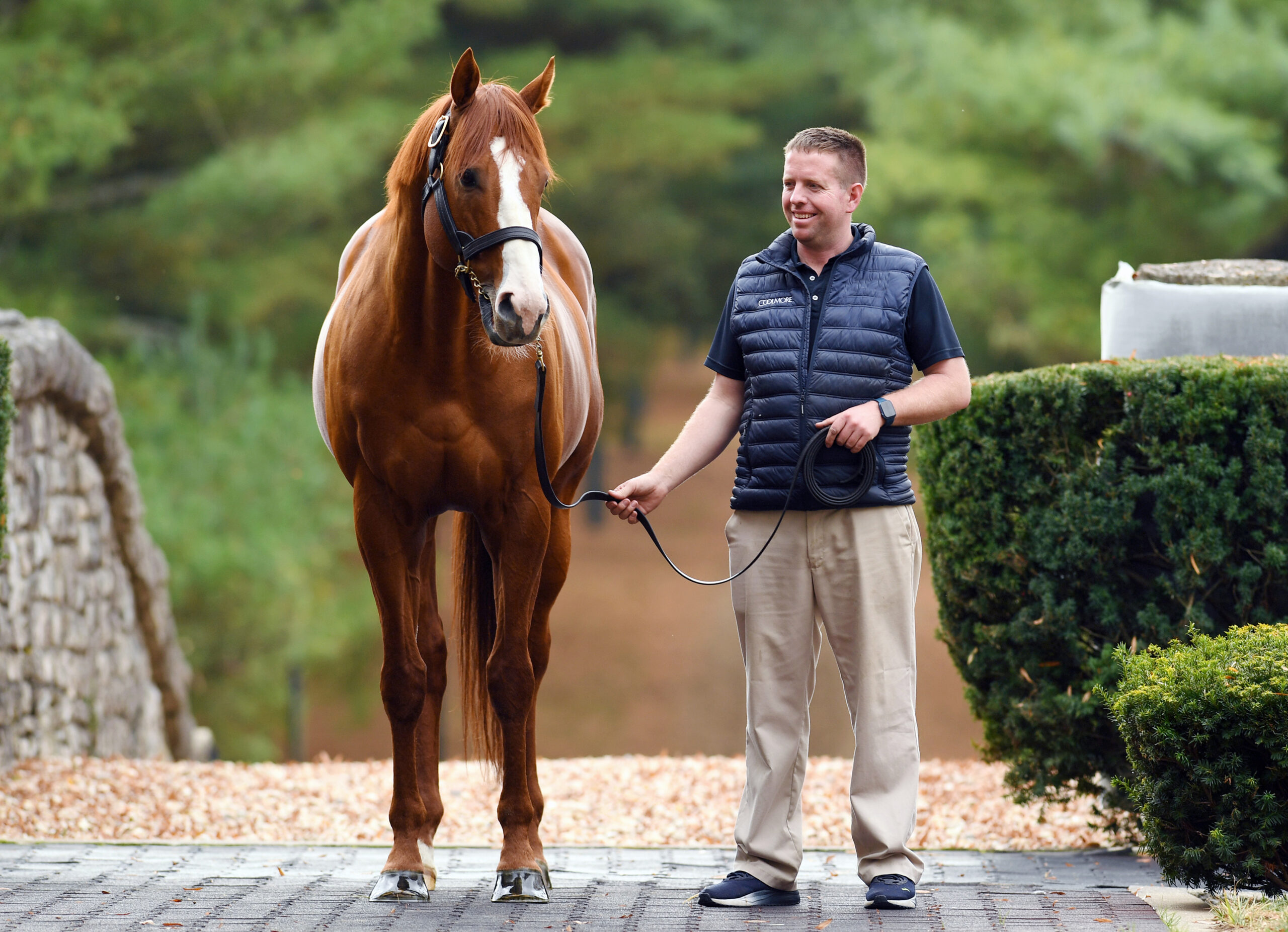
Justify: global impact with first crop. Photo – Bill Selwyn
Another Dundalk winner, Bertinelli, also showed plenty of potential. Bertinelli and Dame Kiri are the first two winners among the 12 starters sired by Justify from Galileo mares. As there are now 59 foals of racing age bred this way, Coolmore and its associates have invested very heavily in this partnership, so it is going to be fascinating to see how it develops.
Interestingly, all of Justify’s Japanese winners – including Awesome Result, Yuttitham, Giuoco Piano and Jovian – have done their winning on dirt, so Justify appears to have plenty to offer buyers, no matter whether they are looking for a dirt or a turf horse.


